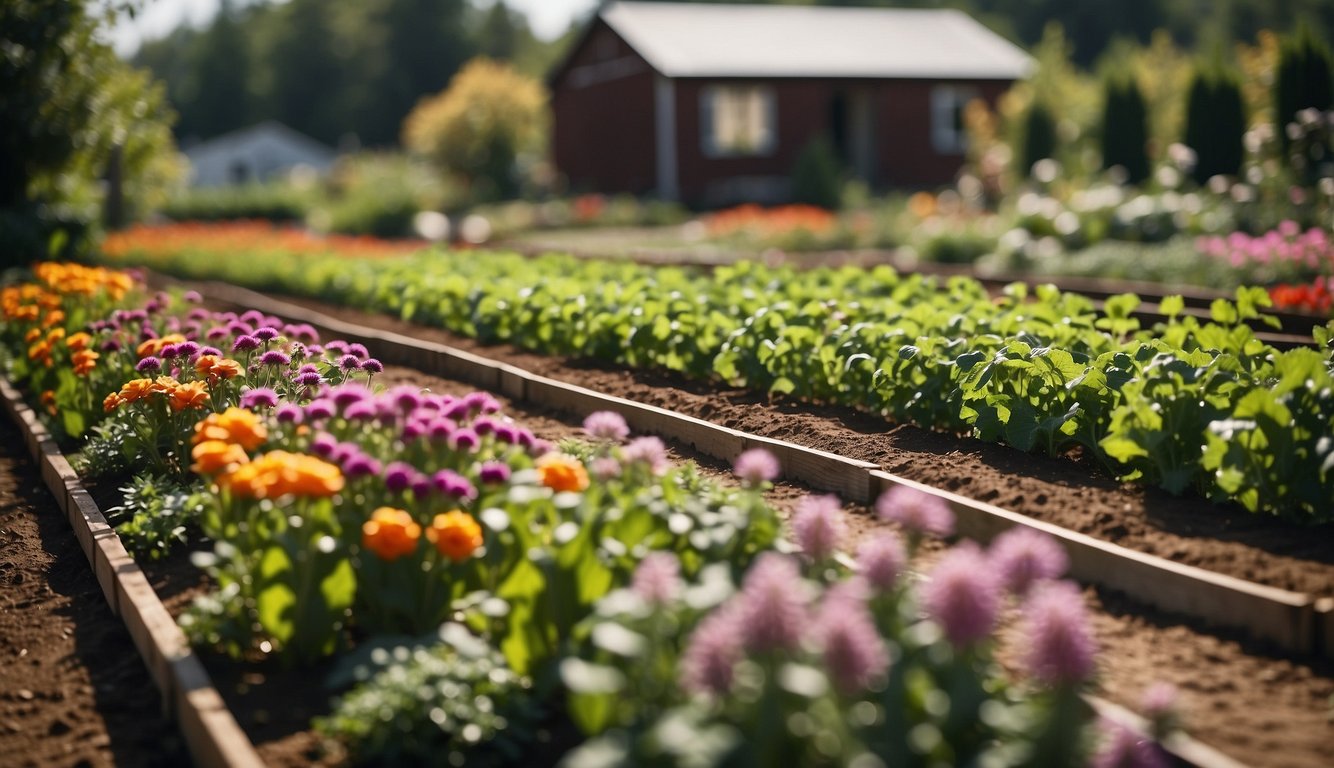TheHerbProf.com is a treasure trove of knowledge for those interested in natural healing and herbal remedies. The website is run by Paul Johnston MD. A naturopathic who has not only received extensive education in the field but also has personal experience in self-healing.
Homestead gardening for beginners is a great way to live a self-sufficient lifestyle, save money, and have fresh, nutritious produce right at your fingertips. Whether you’re a seasoned gardener or a beginner, starting a homestead garden can seem like a daunting task. However, with the right planning and knowledge, anyone can start a successful homestead garden.
When starting a homestead garden, it’s important to start small and not get overwhelmed. It’s better to start with a few plants and expand as you gain experience and confidence. Homesteading for beginners can be a fun and rewarding experience, but it’s important to not take on too much at once. By starting small, you can learn the basics of gardening and homesteading and gradually expand as you feel comfortable.
In this article, I will provide a beginner’s guide to homestead gardening. I will cover the basics of starting a homestead garden, from selecting the right plants to preparing the soil and harvesting your produce. Whether you’re looking to live a more self-sufficient lifestyle or just want to enjoy fresh, nutritious produce, homestead gardening is a great way to achieve your goals.
Understanding the Fundamentals of Homestead Gardens

As someone who is new to homestead gardening, it is important to understand the fundamentals of this type of gardening. Homestead gardening is a way to grow your own food and become more self-sufficient. It involves growing a variety of vegetables and fruits on your property, usually in a garden area.
One of the most important things to consider when starting a homestead garden is the location. You want to choose an area that receives plenty of sunlight, has good soil, and is easily accessible for watering and maintenance. It is also important to think about the size of your garden and how much food you want to grow.
When it comes to choosing what to grow in your homestead garden, it is important to research the types of vegetables and fruits that grow well in your area. Some of the most popular vegetables for homestead gardens include tomatoes, potatoes, carrots, and beans. It is also important to consider the nutritional value of the food you are growing, as well as how much space each plant requires.
In addition to growing your own food, homestead gardening can also be a way to save money on groceries and reduce your carbon footprint. By growing your own food, you are reducing your reliance on commercially grown and transported produce. This can help minimize the carbon footprint associated with food production and transportation.
Overall, homestead gardening is a rewarding and fulfilling way to become more self-sufficient and grow your own food. With the right location, knowledge, and tools, you can create a thriving garden that provides you with fresh, healthy food all year round.
Planning Your Homestead Garden

As a beginner in homestead gardening, it is essential to plan your garden to ensure a successful harvest. The following are some factors you should consider when planning your homestead garden.
Size and Layout Consideration – Homestead Gardening For Beginners
Before starting your homestead garden, you should consider the size and layout of your garden. The size of your garden will depend on the available space, your gardening goals, and the number of people you intend to feed. A small garden of about 100 square feet can provide enough vegetables for a family of four.
When laying out your garden, consider the amount of sunlight, water, and wind your plants will receive. You may want to place tall plants on the north side of your garden to avoid shading smaller plants. You should also consider the accessibility of your garden and the type of soil you have.
Selection of High-Yield Plants
When selecting plants for your homestead garden, choose high-yield plants that will provide a bountiful harvest. Some examples of high-yield plants include tomatoes, peppers, cucumbers, and zucchini. These plants are easy to grow and will produce a large amount of fruit.
You should also consider planting vegetables that are easy to grow and maintain, such as lettuce, spinach, and radishes. These plants require minimal care and will provide a steady supply of fresh vegetables.
Companion Planting Strategy
Companion planting is a strategy used by gardeners to improve plant growth and deter pests. When planning your homestead garden, consider planting companion plants that will benefit each other. For example, planting marigolds alongside tomatoes can help deter pests and improve tomato growth.
Some companion plants also improve soil health by fixing nitrogen and adding organic matter. For example, planting beans alongside corn can improve soil health and increase corn yields.
Planning your homestead garden is essential for a successful harvest. Consider the size and layout of your garden, select high-yield plants, and use companion planting strategies to improve plant growth and deter pests. With proper planning and care, your homestead garden will provide a bountiful harvest for years to come.
Importance of Soil Quality in Homestead Gardening For Beginners
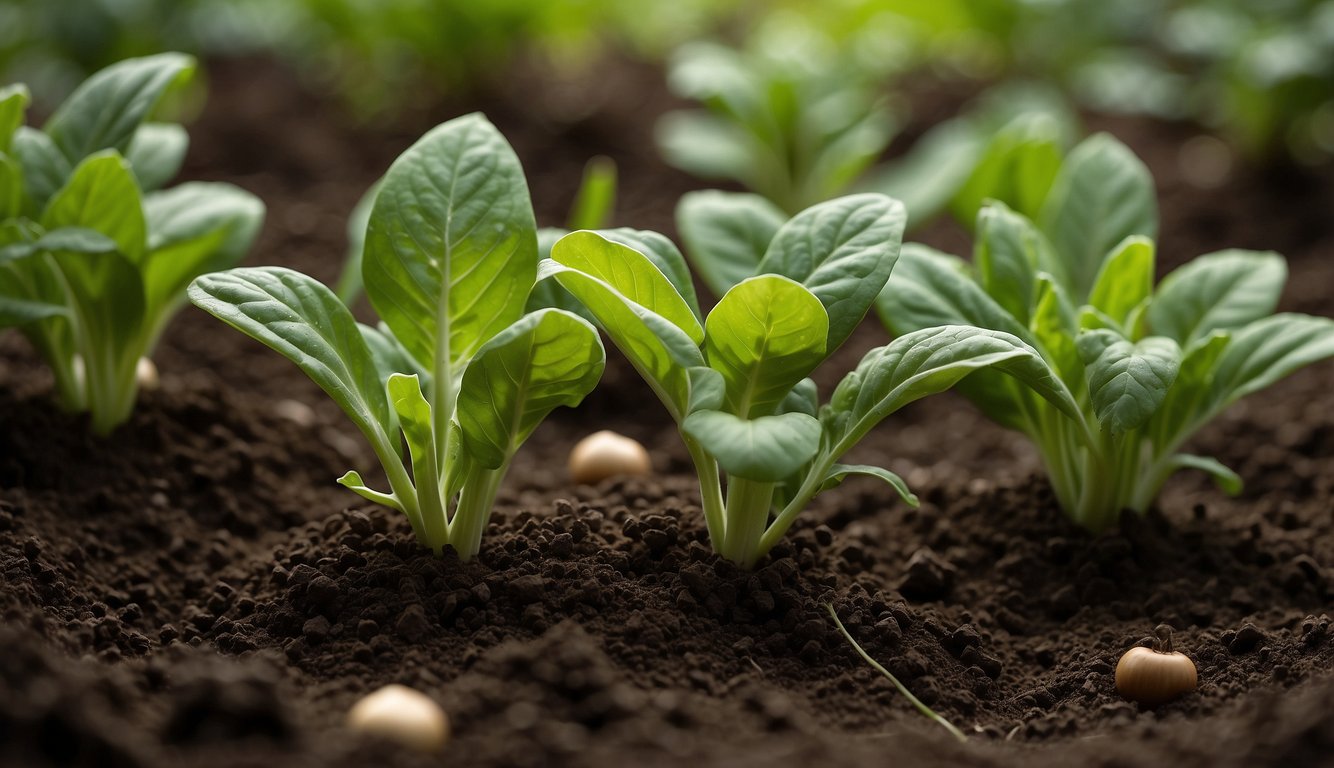
As a beginner in homestead gardening, I have learned that the most crucial element for a successful garden is good soil quality. The soil is the foundation of your garden, and it’s where your plants will get all the nutrients they need to grow. In this section, I’ll explain the importance of soil quality and how to set up your soil for success.
Setting Up Your Soil for Success
Preparing the soil for planting is the first step in creating a thriving garden. The soil should be loose and well-draining to allow air and water to penetrate easily. You can achieve this by adding organic matter such as compost to your soil. Compost is rich in nutrients and helps improve soil health.
It’s essential to test your soil before planting to determine its pH level and nutrient content. Testing your soil will help you determine the type of fertilizer you need to add to your soil. Adding the right amount of fertilizer will help provide your plants with the nutrients they need to grow strong and healthy.
To prepare the soil, you can start by removing any weeds, rocks, or debris from the garden bed. Next, add a layer of compost to the soil and mix it well. You can also add other organic matter such as manure or grass clippings to the soil to improve its quality.
Soil quality is critical in homestead gardening, and it’s essential to prepare the soil before planting. Adding organic matter such as compost and testing the soil to determine its nutrient content will help provide your plants with the nutrients they need to grow strong and healthy. By taking the time to prepare your soil, you’ll be setting your garden up for success.
Watering and Irrigation System in Homestead Gardening For Beginners
As someone who has been practicing homestead gardening for a while now, I can confidently say that proper watering and irrigation are crucial for the health and growth of your plants. In this section, I will share some tips and techniques that I have learned over the years.
Watering – Homestead Gardening For Beginners
Water is a vital component of plant growth, and it is essential to provide the right amount of water to your plants. Under-watering can cause the plants to wilt and eventually die, while over-watering can lead to root rot and other diseases. As a general rule of thumb, most plants need about an inch of water per week, but this can vary depending on factors such as soil type, weather conditions, and the type of plant.
One technique that has worked well for me is to water deeply and infrequently. This means providing a good soak to the plants once or twice a week, rather than watering them lightly every day. This helps the roots to grow deeper and makes the plants more resilient to drought conditions.
Irrigation System
While hand watering can be effective, it can also be time-consuming and inefficient. This is where an irrigation system comes in handy. An irrigation system can help you save time and water while ensuring that your plants get the right amount of moisture.
There are several types of irrigation systems available, such as drip irrigation, soaker hoses, and sprinkler systems. Drip irrigation is a popular choice among homestead gardeners as it delivers water directly to the roots of the plants, reducing water waste and minimizing the risk of fungal diseases.
When choosing an irrigation system, it is important to consider factors such as the size and layout of your garden, the type of plants you are growing, and your water source. You will also need to ensure that you have a reliable hose connection to your irrigation system.
In summary, proper watering and irrigation are crucial for the success of your homestead garden. By following these tips and techniques, you can ensure that your plants get the right amount of water and thrive in your garden.
Homestead Gardening For Beginners Techniques

As a beginner in homestead gardening, it is important to understand some basic techniques that will help you to grow healthy plants and crops. In this section, I will discuss two important techniques that you should consider as you start your homestead gardening journey.
Moving Beyond Container Gardening – Homestead Gardening For Beginners
Container gardening is a great way to start homestead gardening, especially if you have limited space. However, as you gain more experience, you should consider moving beyond container gardening. This will allow you to grow a wider variety of plants and crops, and you will have more control over the growing conditions.
One way to move beyond container gardening is to create raised beds. Raised beds are easy to build and maintain, and they provide good drainage and aeration for your plants. You can also add compost and other organic matter to the soil to improve fertility.
Another option is to create a traditional garden plot. This may require more work, but it will allow you to grow a larger variety of plants and crops. You will need to prepare the soil by tilling it and adding organic matter. You may also need to install irrigation systems and fencing to protect your garden from pests.
Regular Weeding and Maintenance of Your Garden
Weeds can be a major problem in any garden, and homestead gardening is no exception. Weeds compete with your plants for water and nutrients, and they can also harbor pests and diseases. To keep your garden healthy, it is important to weed regularly.
One way to control weeds is to use mulch. Mulch helps to suppress weed growth by blocking sunlight and preventing weed seeds from germinating. You can use a variety of materials for mulch, such as straw, leaves, or grass clippings.
In addition to weeding, you should also maintain your garden by pruning plants, removing dead or diseased foliage, and fertilizing as needed. Regular maintenance will help to keep your plants healthy and productive.
Homestead gardening requires hard work and dedication, but it can be a rewarding and fulfilling experience. By using these techniques and following other gardening tips, you can create a beautiful and productive garden that will provide you with fresh, healthy food for years to come.
The Role of Berry Bushes and Fruit Trees in Homestead Gardening For Beginners
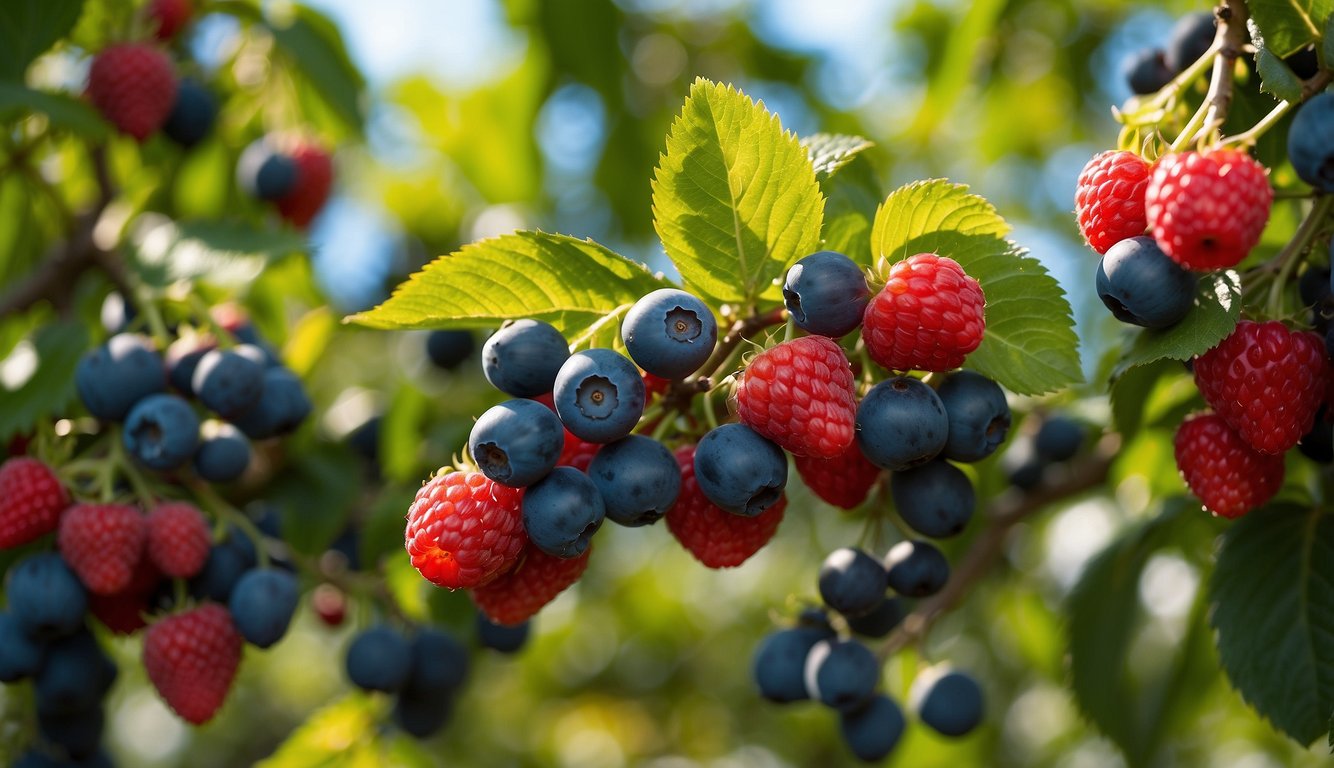
As a homesteader, I know the importance of having a diverse range of crops in my garden. Berry bushes and fruit trees are a great addition to any homestead garden, as they provide a variety of benefits.
Benefits of Berry Bushes – Homestead Gardening For Beginners
Berry bushes are a great addition to any homestead garden because they are low maintenance and provide a high yield of fruit. They are also a great source of vitamins and antioxidants. Some popular berry bushes for homestead gardens include blueberries, raspberries, and blackberries.
When planting berry bushes, it is important to choose a spot that gets plenty of sun and has well-draining soil. It is also important to prune the bushes regularly to promote healthy growth and increase fruit production.
Benefits of Fruit Trees
Fruit trees are another great addition to any homestead garden. They provide a variety of fruits throughout the growing season and can be used for fresh eating or preserving. Some popular fruit trees for homestead gardens include apple, peach, and cherry trees.
When planting fruit trees, it is important to choose a spot that gets plenty of sun and has well-draining soil. It is also important to prune the trees regularly to promote healthy growth and increase fruit production. Additionally, it is important to choose the right variety of fruit tree for your climate and soil type.
Creating an Orchard
If you have the space, you may want to consider creating an orchard on your homestead. An orchard is a collection of fruit trees that are grown together in a specific area. This can be a great way to maximize your fruit production and create a beautiful landscape on your homestead.
When creating an orchard, it is important to choose a variety of fruit trees that will provide fruit throughout the growing season. It is also important to choose a spot that gets plenty of sun and has well-draining soil. Additionally, it is important to space the trees out properly to promote healthy growth and prevent overcrowding.
Berry bushes and fruit trees are a great addition to any homestead garden. They provide a variety of benefits and can be used for fresh eating or preserving. When planting these crops, it is important to choose the right spot, prune regularly, and choose the right variety for your climate and soil type.
Seed Selection and Planting – Homestead Gardening For Beginners

As a beginner in homestead gardening, selecting the right seeds and supplies can be a daunting task. However, with a few basic tips, you can make the best choices for your garden and ensure a successful harvest.
Purchasing Quality Seeds and Supplies
When purchasing seeds, it is essential to choose high-quality seeds that are suited for your growing zone and soil type. You can find a wide variety of seeds at your local nursery or online seed suppliers. Look for seeds that are labeled as “organic” or “non-GMO” to ensure that you are not introducing harmful chemicals into your garden.
In addition to seeds, you will need supplies such as soil, fertilizer, and tools. Choose soil that is rich in nutrients and well-draining to promote healthy plant growth. Organic fertilizers are an excellent choice for homestead gardening as they are safe for the environment and provide essential nutrients to your plants.
Proper Planting and Care for Your Garden Plants – Homestead Gardening For Beginners
Proper planting and care are essential for the success of your homestead garden. When planting your seeds or seedlings, make sure to follow the instructions on the seed packet or plant label. Some plants require specific planting depths or spacing, so it is essential to read the instructions carefully.
Once your plants are in the ground, it is important to provide them with proper care. Water your plants regularly, but be careful not to overwater them. Overwatering can lead to root rot and other plant diseases. Fertilize your plants regularly to provide them with the necessary nutrients to grow and produce healthy crops.
Selecting the right seeds and supplies and providing proper care for your garden plants are essential for a successful homestead garden. With a little bit of knowledge and effort, you can grow your food and enjoy the benefits of fresh, healthy produce.
Harvesting Your Homestead Gardening For Beginners

Harvesting your homestead garden is an exciting and rewarding experience. After all the hard work you put into planting and caring for your crops, it’s time to reap the rewards. Here are some tips to help you get the most out of your harvest.
Timing Your Harvest
Timing is everything when it comes to harvesting your crops. You want to pick your fruits and vegetables at the peak of ripeness to get the best flavor and nutrition. If you wait too long, your produce may become overripe and start to rot.
To determine when to harvest your crops, you need to know their maturity date. This is the date when your plants should start producing fruits or vegetables. You can find this information on the seed packet or by doing a quick search online. Keep in mind that the maturity date is just an estimate, and you may need to adjust your harvest time based on the weather and other factors.
Maximizing Your Yields – Homestead Gardening For Beginners
To get the most out of your homestead garden, you want to maximize your yields. This means growing crops that are well-suited to your climate and soil, planting at the right time, and using proper care and maintenance techniques.
One way to increase your yields is by using companion planting. This is the practice of planting different crops together that benefit each other. For example, planting beans with corn can help fix nitrogen in the soil, which can benefit both crops.
Another way to maximize your yields is by using succession planting. This is the practice of planting crops at different times to ensure a continuous harvest throughout the growing season. For example, you can plant lettuce in the early spring, followed by beans in the summer, and then broccoli in the fall.
Preserving Your Harvest
Preserving your harvest allows you to enjoy the fruits of your labor long after the growing season is over. There are many ways to preserve your harvest, including canning, freezing, drying, and pickling.
Canning is a popular method of preserving fruits and vegetables. It involves heating the food to a high temperature to kill any bacteria and then sealing it in a jar. Freezing is another popular method that involves blanching the food and then freezing it in an airtight container.
Drying is a great way to preserve herbs, fruits, and vegetables. It involves removing the moisture from the food and then storing it in an airtight container. Pickling is another method that involves soaking the food in vinegar, salt, and spices to preserve it.
Harvesting your homestead garden is a fun and rewarding experience. By timing your harvest, maximizing your yields, and preserving your crops, you can enjoy the fruits of your labor all year round.
The Practice of Saving Seeds for Future Use
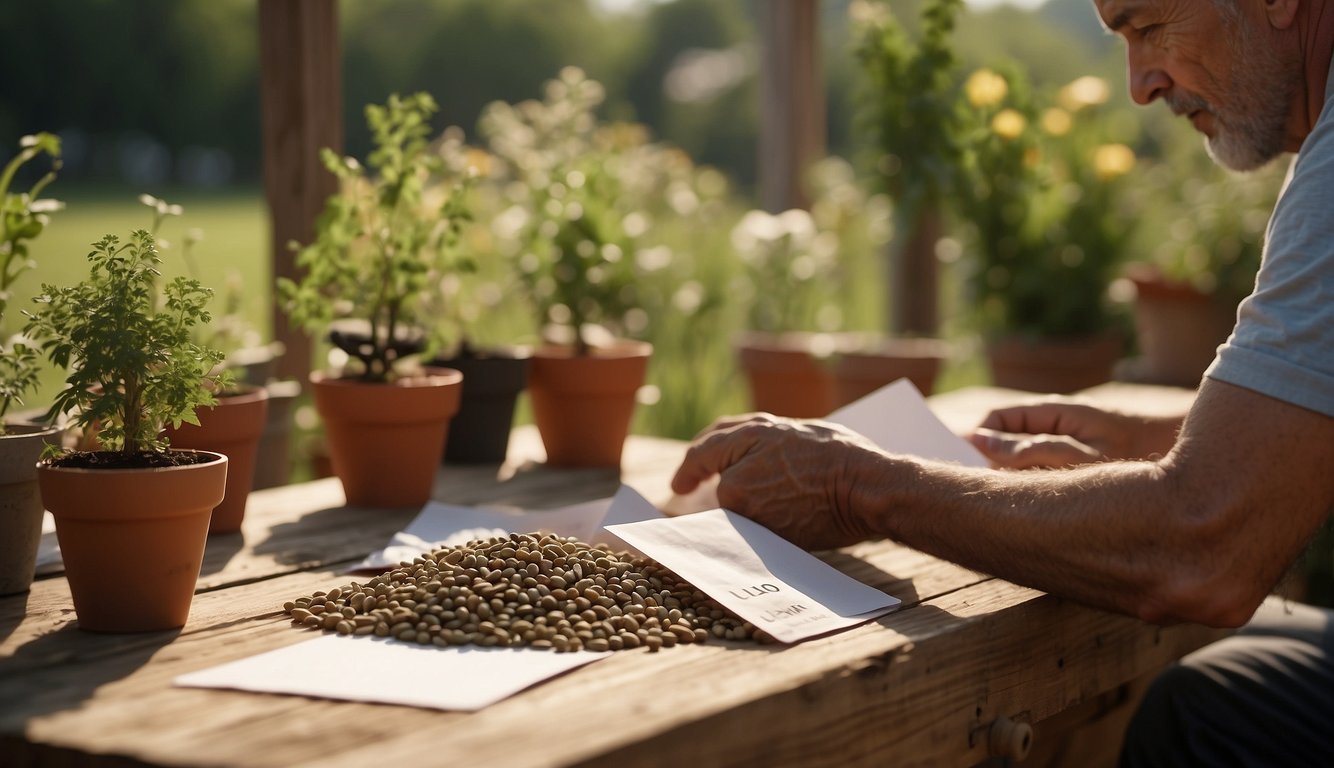
As a homestead gardener, I understand the importance of seed saving for future use. Saving seeds is a simple yet essential practice that empowers us to be self-sufficient and sustainable. By saving seeds from our best-performing plants, we can ensure the health and diversity of our crops, and preserve heritage varieties for future generations.
Seed saving is also a great way to save money on buying seeds every year. By saving seeds, we can produce our own seed and stop relying on outside sources to provide seed for us. This can be especially crucial in times of food insecurity, as we can ensure that we have a reliable source of seeds to grow our own food.
When it comes to seed saving, it’s important to know which plants are best for saving seeds. Some plants are easier to save seeds from than others, and some plants require specific techniques to ensure the seeds are viable. For example, tomatoes and peppers are relatively easy to save seeds from, while plants like lettuce and carrots require more attention and care.
One of the most important things to keep in mind when saving seeds is to ensure that the seeds are dry before storing them. Wet seeds can rot and become unusable, so it’s important to allow the seeds to dry completely before storing them. This can be done by spreading the seeds out on a tray or paper towel and allowing them to air dry for a few days.
Another Important Factor
Another important factor to consider when saving seeds is to label them properly. It can be easy to forget which seeds are which, especially if you save seeds from multiple plants. By labeling your seeds with the plant name and the date they were saved, you can ensure that you know exactly what you’re planting in the future.
Seed saving is an essential practice for homestead gardeners who want to be self-sufficient, sustainable, and ensure food security. By saving seeds from our best-performing plants, we can ensure the health and diversity of our crops, and preserve heritage varieties for future generations. With a little knowledge and care, anyone can save seeds and enjoy the benefits of a thriving garden year after year.
Before You Go – Homestead Gardening For Beginners

Homestead gardening is a rewarding and fulfilling practice that promotes self-sufficiency and sustainability. Through homestead gardening, I can grow my own food and reduce my dependence on grocery stores and industrial agriculture. However, it requires hard work and dedication to maintain a successful homestead garden.
To become knowledgeable about homestead gardening, I recommend starting with easy-to-grow vegetables and herbs such as tomatoes, lettuce, basil, and mint. These plants are resilient and forgiving, making them ideal for those new to gardening. Additionally, it is essential to choose plants well-suited to your local climate to ensure a higher chance of success.
Preparing the soil is a critical aspect of homestead gardening. I can improve soil quality by adding organic matter such as compost or manure. Furthermore, I can use natural pest control methods such as companion planting and crop rotation to avoid using harmful chemicals.
Overall, homestead gardening is a fulfilling and sustainable way of life that requires hard work, dedication, and knowledge. By growing my own food, I can promote self-sufficiency and reduce my carbon footprint.
The Green Connection: Homestead Gardening For Beginners and The Herb Prof
Let’s dig into the green topic of Homestead Gardening For Beginners and its connection to our herbal paradise, theherbprof.com. Ready for a green-thumb journey?
Firstly, homestead gardening is a practice of self-sufficiency and sustainability. It’s about growing your own food and being in tune with nature. Sounds familiar? That’s because theherbprof.com helps you be self-sufficient in your herbal knowledge!
Secondly, both homestead gardening and theherbprof.com are about nurturing growth. Just like a garden needs care to thrive, theherbprof.com helps your herbal knowledge thrive with accurate information.
Lastly, they both aim to enrich our lives. A thriving garden brings joy to our hearts, while theherbprof.com brings joy to our minds with herbal wisdom.
So, there you have it! Homestead Gardening For Beginners and theherbprof.com are a green pair indeed. They both symbolize self-sufficiency, nurturing growth, and enrichment. Now, isn’t that a green piece of information to share at your next garden party? Keep growing, folks!
References – Homestead Gardening For Beginners
Little Herb Encyclopedia, by Jack Ritchason; N.D., Woodland Publishing Incorporated, 1995
The Ultimate Healing System, Course Manual, Copyright 1985, Don Lepore
Planetary Herbology, Michael Tierra, C.A., N.D., Lotus Press, 1988
Handbook of Medicinal Herbs, by James A. Duke, Pub. CRP Second Edition 2007
The Complete Medicinal Herbal, by Penelope Ody, Published by Dorling Kindersley
Check the Following Articles!
How to Propagate Dill: A Step-by-Step Guide
Does Vinegar Repel Ants? The Truth You Need to Know
Bokashi Ferment Alternative: Sustainable Solution
Frequently Asked Questions – Homestead Gardening For Beginners
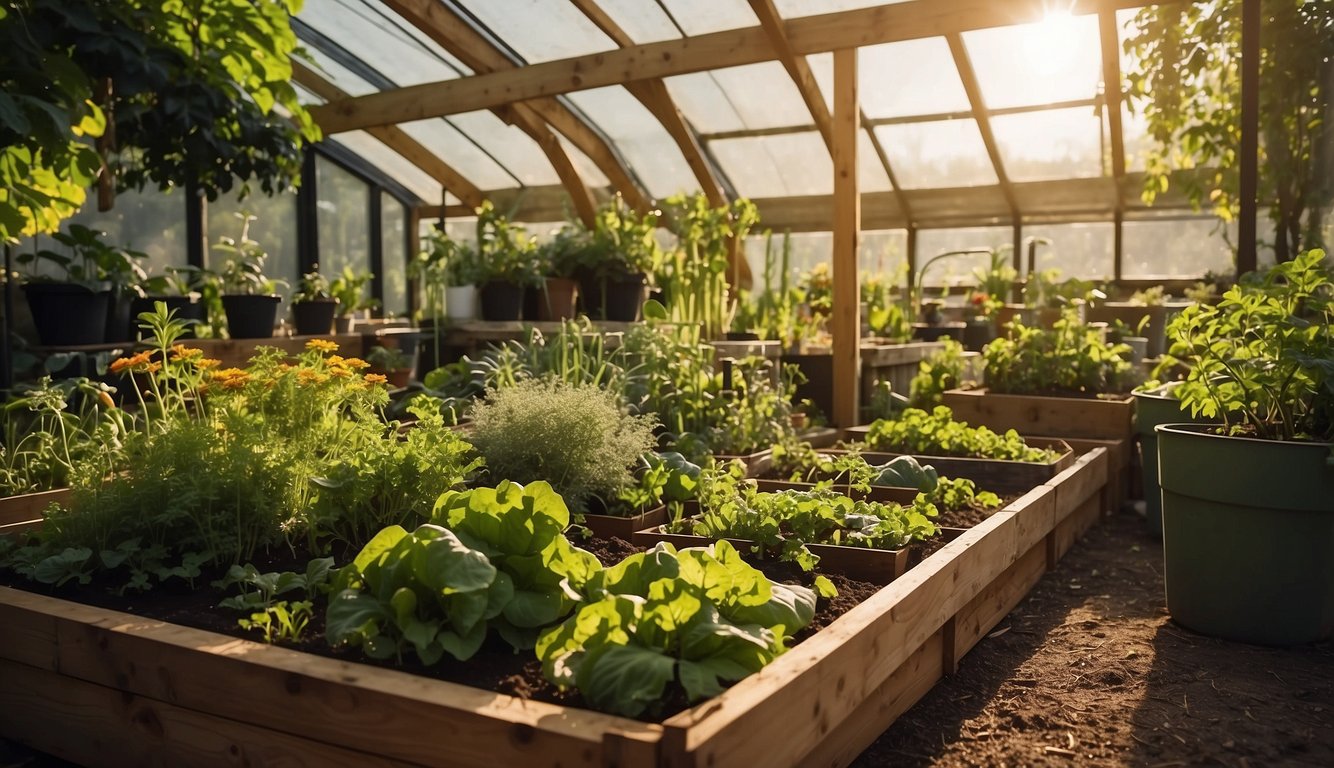
What are the essential steps to starting a garden for homesteading?
Starting a garden for homesteading requires a few essential steps. First, you need to select a suitable location for your garden. Look for a spot that gets plenty of sunlight and has good soil drainage. Next, you need to prepare the soil by removing any weeds, rocks, or debris and adding compost or other organic matter to improve soil fertility. Then, you should decide which vegetables and plants you want to grow and plan your garden layout accordingly. Finally, you need to plant your seeds or seedlings and water them regularly.
Which vegetables and plants are recommended for a beginner’s homestead garden?
Some vegetables and plants that are recommended for a beginner’s homestead garden include tomatoes, peppers, cucumbers, zucchini, squash, beans, peas, lettuce, spinach, and herbs like basil and parsley. These plants are relatively easy to grow and provide a good yield.
How can I determine the ideal size for my homestead garden?
The ideal size for your homestead garden depends on several factors, including how much space you have available, how many people you are feeding, and how much time and effort you want to put into gardening. As a beginner, it’s best to start small and gradually expand your garden as you gain experience and confidence.
What are some effective garden layout strategies for small-scale homesteading?
Some effective garden layout strategies for small-scale homesteading include intercropping, companion planting, and vertical gardening. Intercropping involves planting different crops together in the same space to maximize yield and reduce pest and disease problems. Companion planting involves planting complementary crops together to improve soil fertility and repel pests. Vertical gardening involves growing plants on trellises, walls, or other structures to save space.
Can you suggest any beginner-friendly resources for learning about homestead gardening?
Yes, there are several beginner-friendly resources for learning about homestead gardening. Some useful resources include online gardening forums, gardening blogs, YouTube channels, and books on homesteading and permaculture. You can also attend gardening workshops or classes in your local community to learn from experienced gardeners.
What permaculture principles should I consider when planning my homestead garden?
When planning your homestead garden, you should consider several permaculture principles, including diversity, interdependence, and sustainability. Diversity involves planting a variety of crops to promote biodiversity and reduce the risk of crop failure. Interdependence involves creating a self-sustaining ecosystem where plants, animals, and insects work together to support each other. Sustainability involves using natural resources wisely and minimizing waste.
